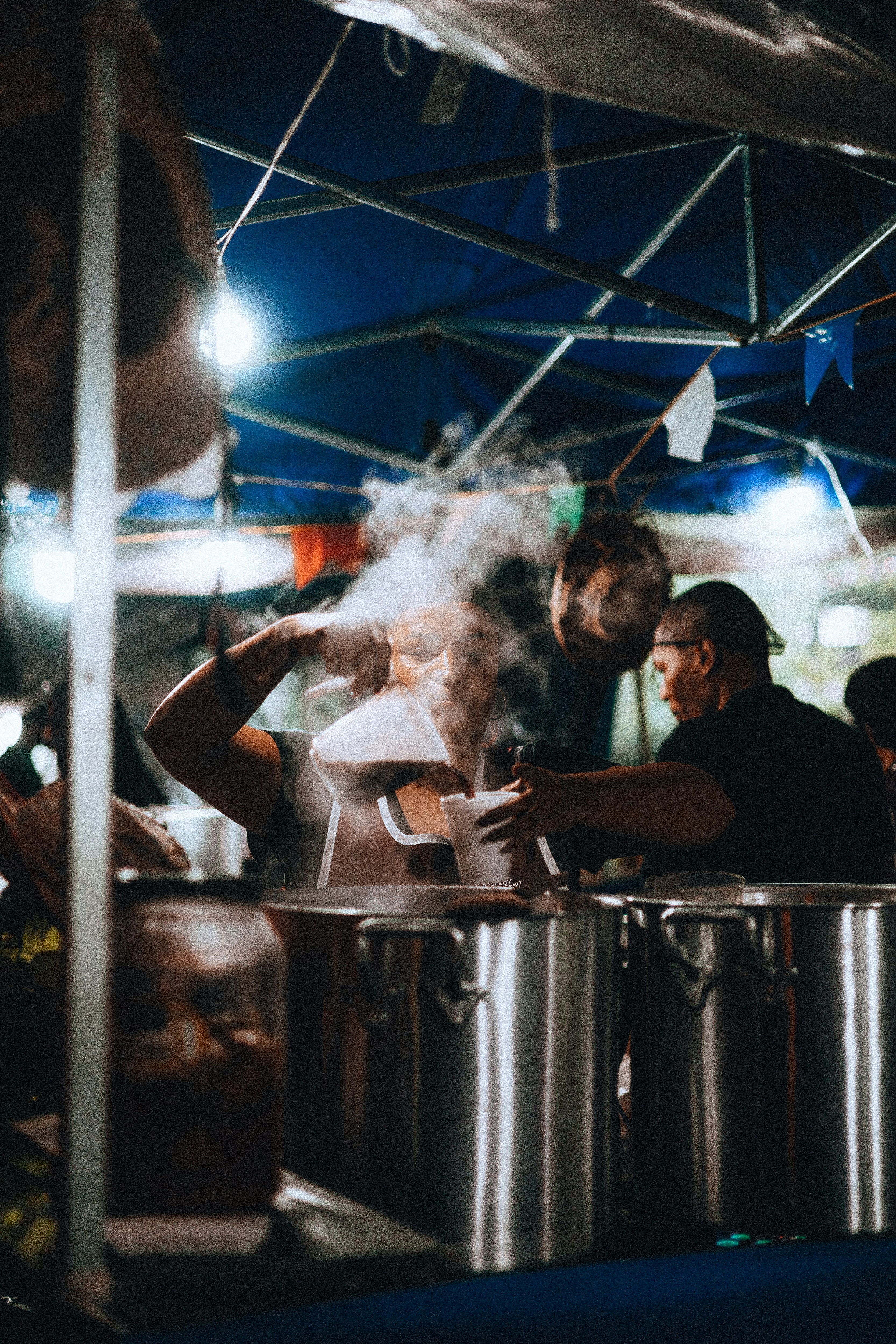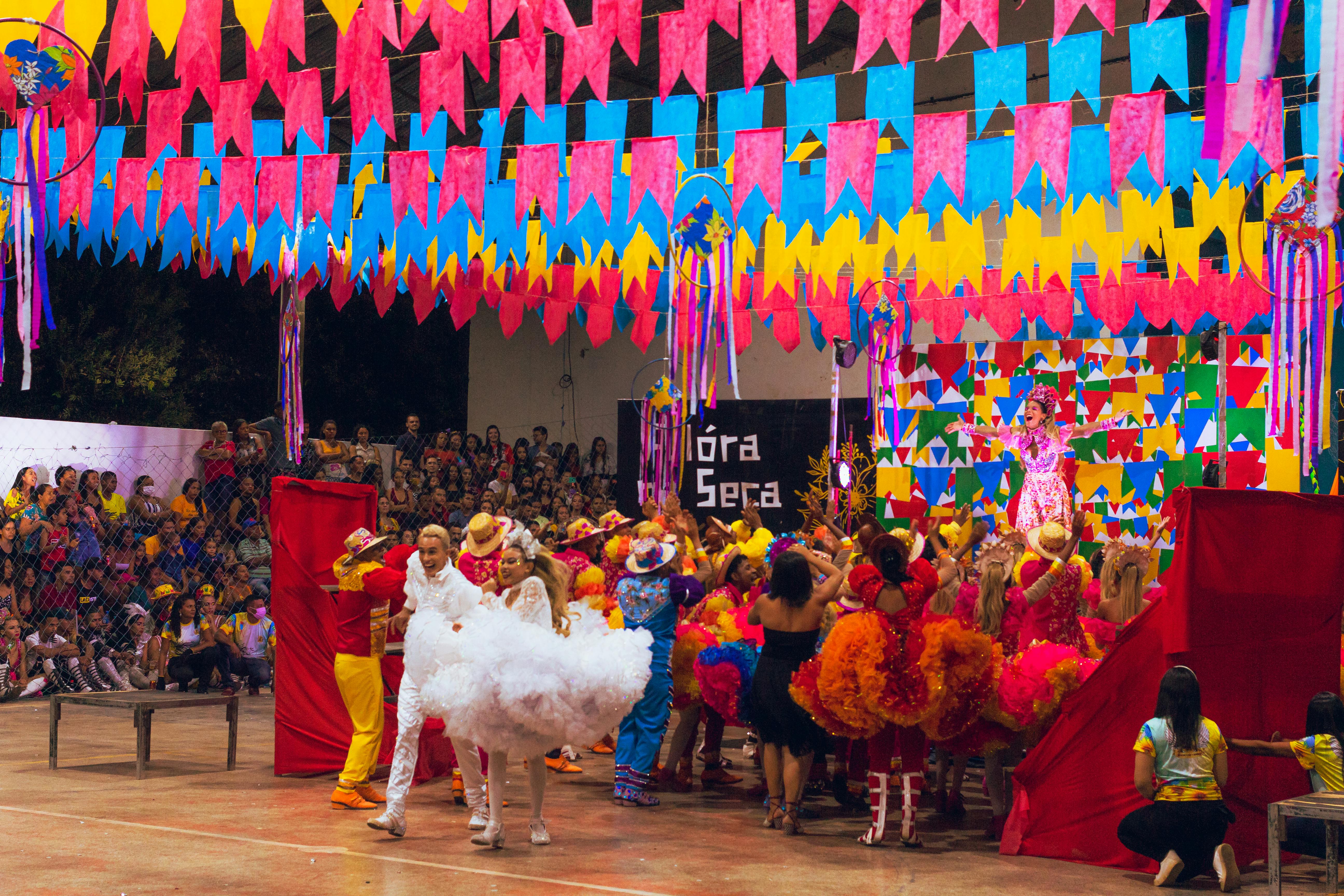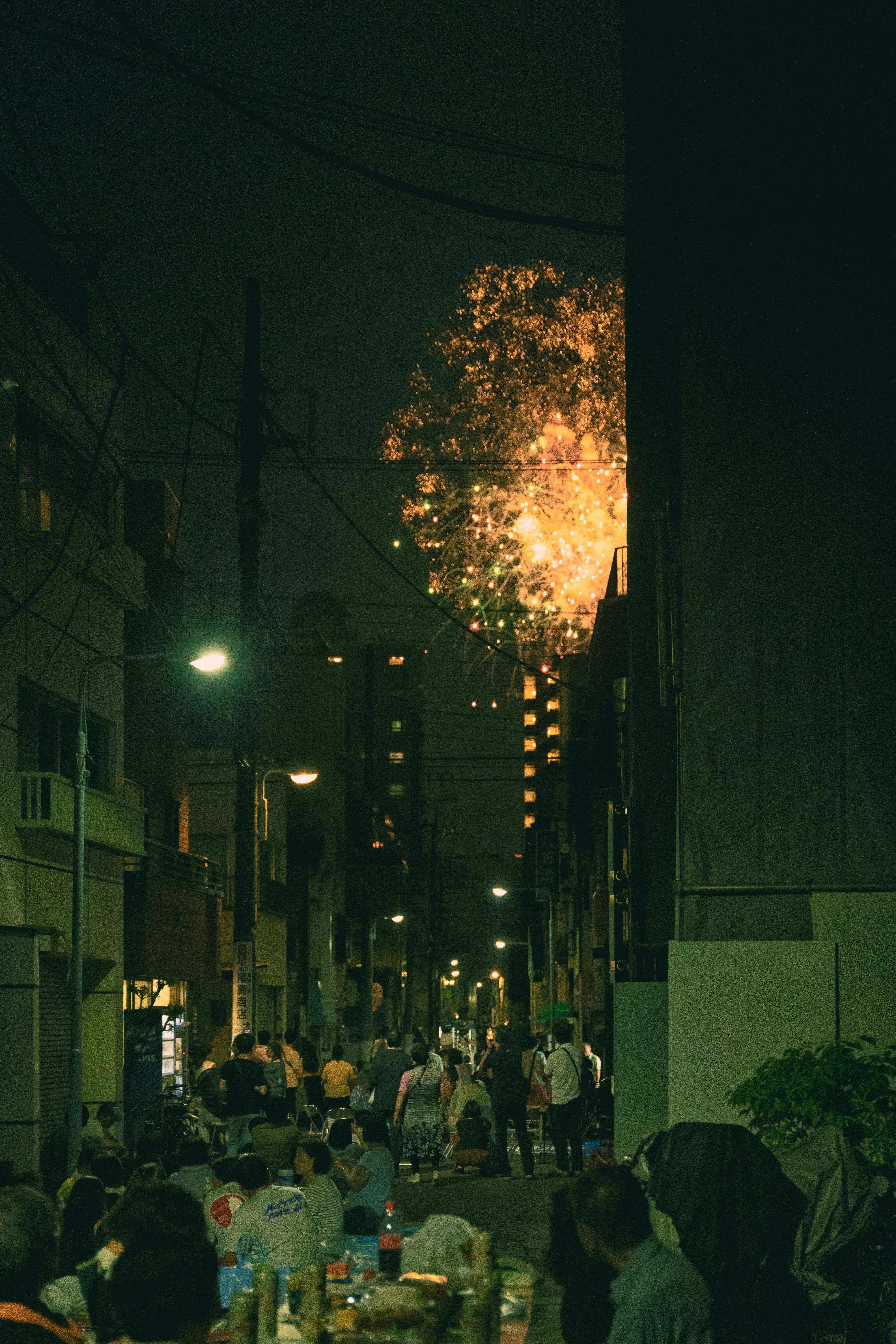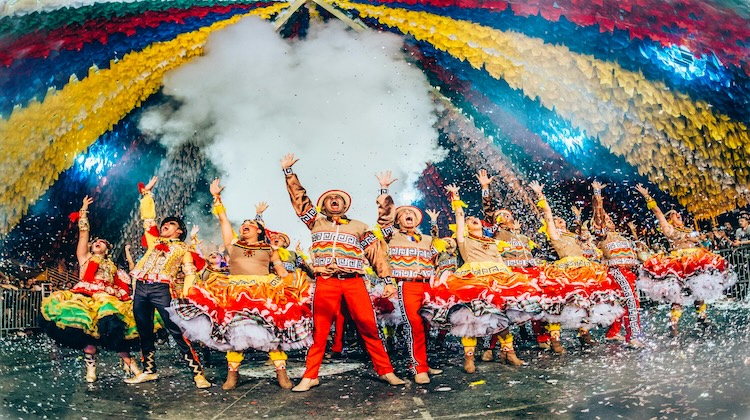Taking place throughout the month of June, these festivities honor Catholic saints such as Saint Anthony (Santo Antônio), Saint John (São João), and Saint Peter (São Pedro). However, they also incorporate elements of Brazilian folklore, rural traditions, and even indigenous and African influences.
For Portuguese learners, understanding Festas Juninas is a great way to expand vocabulary related to culture, food, music, and traditions. The festivals are marked by colorful decorations, lively music, traditional dances, and delicious seasonal treats. Let’s explore the key aspects of this unique Brazilian celebration.
The Origins and Cultural Significance
The roots of Festas Juninas can be traced back to European traditions, particularly Portuguese and Spanish festivities that celebrated the summer solstice. When these customs arrived in Brazil during the colonial period, they blended with local indigenous and African cultures, creating a uniquely Brazilian celebration.
In rural areas, Festas Juninas were originally linked to agriculture, as June marks the end of the harvest season for crops like corn, a key ingredient in many festival foods. Over time, the celebration became a way for communities to come together, give thanks, and enjoy music and dance.
For Portuguese learners, this festival is an opportunity to learn words like:
- Fogueira (bonfire) – A central element of the celebration.
- Quadrilha (square dance) – A traditional dance performed at festivals.
- Festa caipira (country-style party) – Refers to the rural theme of the event.
Traditional Foods and Drinks
One of the highlights of Festas Juninas is the delicious food. Since corn is harvested in June, many dishes are made from this ingredient. Here are some must-try treats:
- Pamonha – A paste made from grated corn, often sweet or savory.
- Curau – A creamy corn pudding, similar to a thick porridge.
- Canjica – A sweet dessert made with white corn, milk, and cinnamon.
- Pé de moleque – A peanut brittle candy.
- Quentão – A hot drink made with cachaça (sugarcane liquor), ginger, and spices.
When talking about food in Portuguese, it’s useful to know phrases like:
- "Eu quero experimentar…" (I want to try…)
- "Isso é típico das Festas Juninas?" (Is this typical of June Festivals?)
- "Está delicioso!" (It’s delicious!)

Music, Dance, and Games
No Festa Junina is complete without music and dance. The most famous dance is the quadrilha, a group dance that resembles a square dance. Participants dress in country-style clothing, with men wearing checkered shirts and straw hats, while women wear colorful dresses with pigtails and painted freckles.
Popular songs played during the festival include "São João na Roça" and "Capelinha de Melão." These songs often use simple, repetitive lyrics, making them great for Portuguese learners to practice listening and pronunciation.

Games are also an essential part of the celebration. Some classic ones include:
- Correio elegante – A playful way to send anonymous messages.
- Pescaria (fishing game) – A game where participants "fish" for prizes.
- Jogo de argola (ring toss) – Players try to throw rings onto bottles.
Useful phrases for joining in the fun:
- "Como se joga isso?" (How do you play this?)
- "Posso participar?" (Can I join?)
- "Que prêmio eu ganhei?" (What prize did I win?)
Regional Variations Across Brazil
While Festas Juninas are celebrated nationwide, each region has its own unique twist:
- Northeast: The biggest and most famous festivals happen here, especially in Campina Grande (Paraíba) and Caruaru (Pernambuco). The celebrations include massive bonfires, live forró music, and elaborate decorations.
- Southeast: In São Paulo and Minas Gerais, the festivals are more influenced by rural traditions, with a focus on food and family gatherings.
- South: Due to European immigration, some areas incorporate German or Italian elements, such as different types of dances and foods.
For Portuguese learners, discussing regional differences can be a great way to practice comparisons:
- "No Nordeste, as festas são maiores." (In the Northeast, the festivals are bigger.)
- "Aqui, a quadrilha é diferente." (Here, the square dance is different.)

Why Festas Juninas Are Great for Learning Portuguese?
Festas Juninas are more than just a party—they are a vibrant and immersive way to experience Brazilian culture, history, and language. For Portuguese learners, these festivals offer a fantastic opportunity to practice the language in a real-world context while enjoying a lively and welcoming atmosphere. By engaging with Festas Juninas, students can:
- Expand their vocabulary with food, music, and tradition-related words.
- Practice listening skills with traditional songs and simple phrases.
- Understand regional differences in Brazilian culture.
Listening to traditional forró songs, for example, helps with pronunciation and comprehension, as the lyrics are often repetitive and easy to follow. Participating in games like pescaria or correio elegante encourages learners to use simple phrases and interact with native speakers in a relaxed setting. Even ordering food—asking for a pamonha or a cup of quentão—becomes a chance to practice conversational Portuguese.
Additionally, understanding the regional differences in how Festas Juninas are celebrated (such as the massive festivals in the Northeast versus the more intimate gatherings in the South) helps learners appreciate Brazil’s cultural diversity. Discussing these variations with Brazilians can lead to deeper conversations and stronger language skills.
If you ever have the chance to visit Brazil in June, don’t miss the opportunity to join a Festa Junina. The combination of delicious food, joyful music, and warm hospitality creates the perfect environment for language practice. Whether you're dancing the quadrilha, tasting canjica, or simply chatting with locals, you’ll be improving your Portuguese while making unforgettable memories.

Feliz São João! (Happy Saint John’s Day!)







